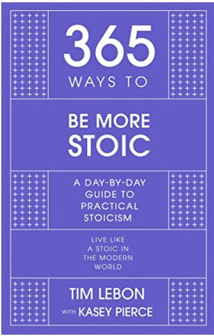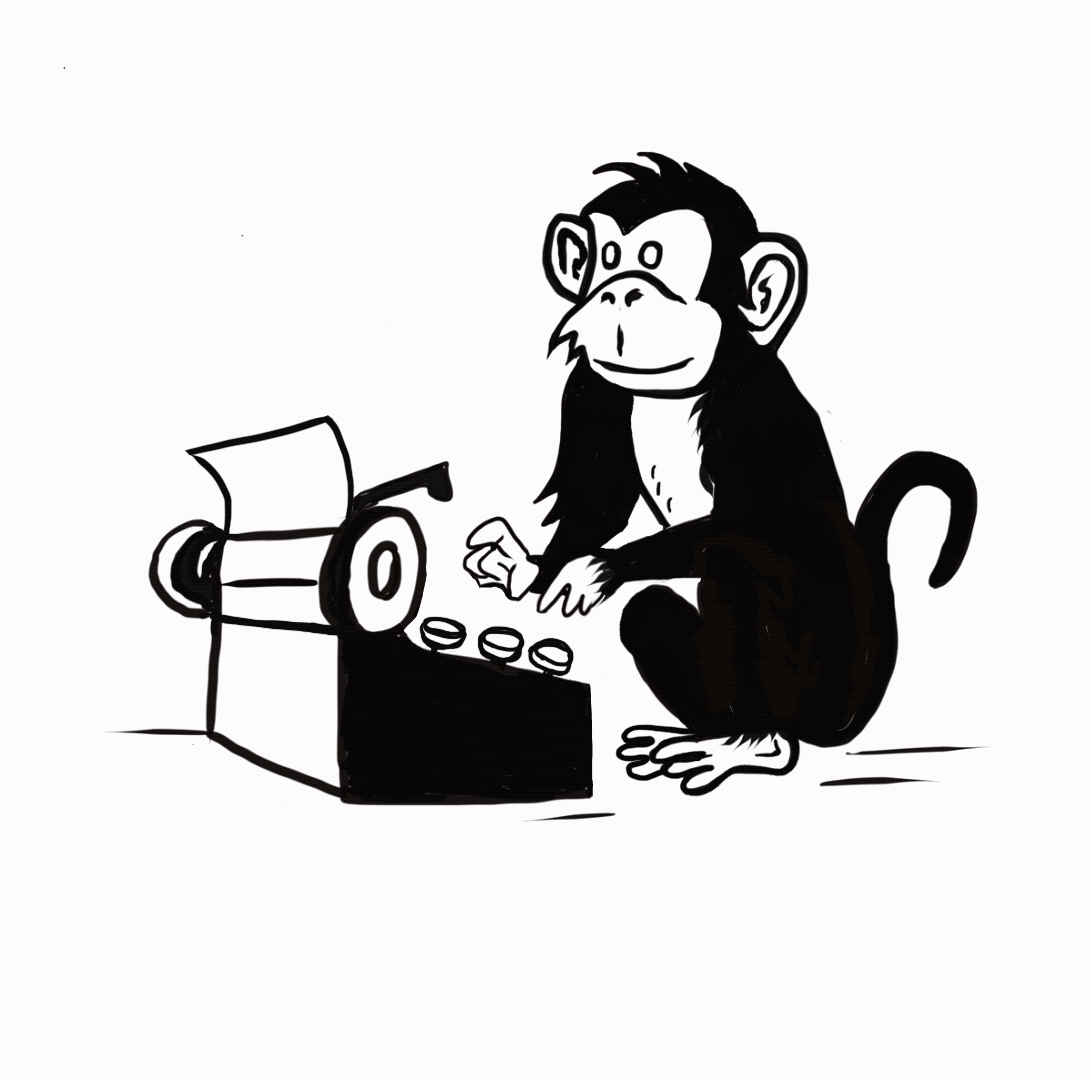Tim LeBon is a Cognitive Behavioral Therapist and Modern Stoic. He’s part of the team at the indispensable Modern Stoicism, and his personal site is TimLeBon.com. He is a past Chair of the Society for Philosophy in Practice (SPP) and was the founding editor of Practical Philosophy. He is the author of “Wise Therapy“ and “Achieve your Potential with Positive Psychology.” His new book, “365 Ways To Be More Stoic,” comes out on November 10, but you can pre-order now–we did! And don’t forget to register now for Stoic Week–seven days of living like a Stoic, beginning October 24.

1. What led you to embrace Stoic philosophy?
Back in 2001, I wrote Wise Therapy, which provided a toolkit of practical philosophical ideas and exercises. Stoicism was part of that toolkit, so to some extent, I have been influenced by Stoic philosophy for ages. But I only came to truly embrace it in 2011, after I was invited to join a non-profit organisation called Modern Stoicism. Modern Stoicism comprises an interdisciplinary team of academics and psychotherapists aiming at providing resources to help people learn more about Stoicism. It also investigates a rather important question–does Stoicism actually work! I got the task of finding out. When we ran the first International Stoic Week and analysed the results, I was amazed. Practising Stoicism for just a week had a really significant positive effect on the well-being of very many participants. That’s when I decided to dive deeper into Stoicism. The deeper I went, the more I came to see Stoicism’s potential.
2. Your new book is titled “365 Ways To Be More Stoic,” which is a lot of ways. But are there any “bonus” Stoic principles you didn’t touch on in the book?
Rather than give you an entry which would be just bubbling under the top 365 (and maybe inferior to them), would you prefer it if I shared a key idea that underpins the whole book? I hoped you would!
This key idea is the Stoic Elevator. Picture an elevator which has five levels. At each level, you learn about a key Stoic idea. Do you want to take a ride?
At level 1, you learn about “controlling the controllables” – the technical term for this idea being the “dichotomy of control.” This is such an important tool that we devote an entire chapter to it in 365 Ways to be more Stoic. For many, the dichotomy of control enables a crucial shift in mindset, away from focusing your energy on what you can’t control towards taking charge of what you can.
Some people start and finish their journey into Stoicism there, yet Stoicism offers so much more! Do you want to take a look at what’s at level 2? There you learn about the virtues, inbuilt qualities we all have, but can develop more. Stoics argue that cultivating the virtues is your surest route to both being a good person and personal happiness.
Sounds interesting? Then why not go all the way up to level 3, which is all about managing emotions well… There you discover the line in an ancient Stoic handbook that inspired a twentieth-century revolution in mental health care. It can help each of us become free of turbulent emotions – such as anger, anxiety and guilt.
Stoics believe that if you go all the way up to levels 4 and 5 (which space prevents me going into here) then the benefits will be greater still.
There are two key ideas here.
The first is that all these Stoic ideas are helpful, and you can, to some extent, pick and choose which you want to apply. How far you want to go up the Stoic Elevator is up to you!
At the same time, Stoicism is greater than the sum of the parts. Combine these five elements of Stoicism and the rewards increase. For example, applying the virtues will help you control the controllable more skillfully.
3. Our book “Wise Up” is the result of a creative journey–it started as a straightforward advice book for millennial women. What was the process like for “365 Ways”?
Kasey Pierce, our editor, did an amazing job, and throughout the process we had a constructive and often humorous to and fro. As well as making the examples and language more relatable, she helped balance my middle-aged male perspective with that of a younger female. She was also great at ensuring quality control for every one of the 365 entries. Whenever I put forward an entry that didn’t quite have enough oomph, Kasey would gently say “Yeah, that’s kinda good, but how can we turn that into something more powerful to give our readers a great start to their day”.
Another thing about 365 Ways I am most pleased about is our decision to ask for and include real-life Stoic success stories. These really show how ancient Stoic ideas help people in the modern world. They also helped shape the elements of Stoicism we focus on most. Several contributors mentioned forgiveness. For example, John Harlow, a young Stoic who got stuck in one of Britain’s deepest caves for 12 hours because of a colleague’s error, describes how his Stoicism helped him be more charitable towards the guilty party. Other stories give vivid examples of how Stoicism helped individuals show more courage, self-control and turn adversity into opportunity.
4. Stoicism seems to be having a cultural moment. Why do you think that is?
I am not sure it will turn out to be just a “moment”! It’s helpful to compare Stoicism with Buddhism, another ancient practical philosophy. Buddhism and Stoicism have many similarities -such as a focus on helping others, mindfulness and on the benefits of trying to be the best version of yourself. It turns out that Stoicism appeals to many people who are into Buddhism. If Buddhism is so popular with Westerners, why shouldn’t Stoicism be even more popular?
Buddhism has also expanded its influence, by spawning mindfulness–which incorporates Buddhist ideas without elements of doctrine like reincarnation. Similarly, some modern Stoics–myself included–are aiming to create an evidence-based Modern Stoicism which doesn’t rely on outdated science. I think this too increases its attractiveness and appeal. I say more about this is my bonus question below!
5. When was the last time you screamed your lungs out, for any reason?
That’s easy – watching sport. But, I hear you object–should a real Stoic get so emotional? I think the answer can be yes! My good friend Greg Sadler and I have discussed this very point here https://modernstoicism.com/stoicism-sports-and-fandom-an-exchange-by-tim-lebon-and–greg-sadler/
To find out which team and sport I follow, and whether it’s really something a Stoic should do, check out my website at http://www.timlebon.com
Bonus: What question should we have asked, and what’s the answer?
“You identify as a Modern Stoic. What’s the difference between modern Stoicism and ancient Stoicism?“
Ancient Stoicism contains many profound ideas that can make a significant difference to our well-being. It also contains some strange-sounding ideas, which might be off-putting to some modern readers–such as the idea that the universe is a living thing.
Some modern Stoics (including myself) try to separate the cobwebs from the gems in ancient Stoicism. They then blend the gems of ancient Stoicism with those of modern science to create an evidence-based philosophy for life with its roots in ancient wisdom. My colleague Chuck Chaprakani and I wrote a little book that goes into this further, which at the time of writing, you can get free here: https://thestoicgym.com/books/stoicism-cobwebs-and-gems-free

What a great read! I want to get all the books notes in this articke